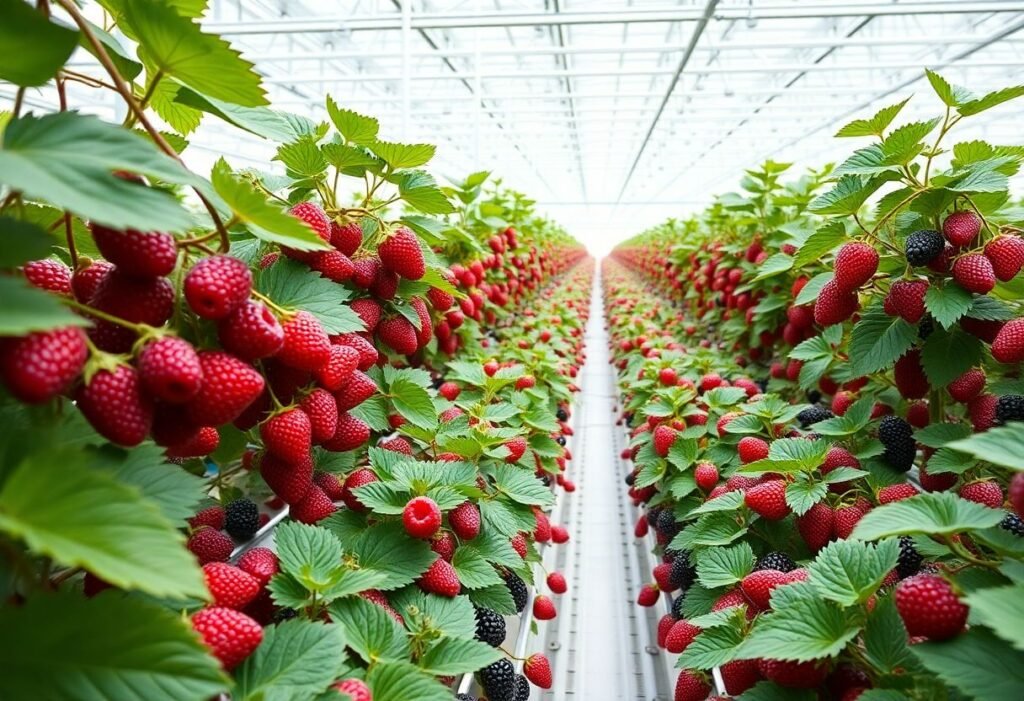The groundbreaking development of an indoor vertical farm signifies a transformative shift in sustainable agriculture. This innovative facility, located in Richmond, VA, aims to meet the growing global demand for food through advanced technologies that minimize environmental impact.
Innovating Food Production with Vertical Farming
The initiative to create the world’s first large-scale indoor vertical farm dedicated to berry production marks a significant advancement in agricultural practices. This futuristic farm utilizes innovative vertical farming techniques, allowing for efficient use of space and resources. By growing strawberries in towering structures inside a controlled environment, the farm can maximize yield while reducing exposure to pests and weather variability. With a projected output of 4 million pounds of strawberries annually, this establishment represents a major leap towards enhancing local food supplies while addressing sustainability concerns.
Advancements in Agricultural Technology
The integration of cutting-edge technologies is at the core of this vertical farming operation. Automated systems monitor and adjust environmental conditions such as light, temperature, and humidity, ensuring optimal growth throughout the year. The use of hydroponics allows for a soil-less growing method, which not only conserves water but also minimizes the need for harmful pesticides. As a result, the strawberries produced are not only fresher but also healthier, aligning with the increasing consumer demand for organic produce.
The Role of Scientific Collaboration
This pioneering project is backed by a coalition of international scientists and agricultural experts dedicated to redefining food production. Their focus extends beyond mere productivity; they are committed to establishing sustainable practices that can be replicated globally. By sharing research and findings, they seek to inspire future innovations and encourage the adoption of vertical farming methods worldwide, which could alleviate some challenges faced in traditional agriculture.
Impact on Local Communities
By situating this vertical farm in Richmond, VA, there is a significant opportunity to boost local economies. Not only does this project promise to create numerous jobs ranging from farm operations to research positions, but it also aims to provide fresh produce to nearby communities. By reducing the distance food travels from farm to table, consumers can enjoy fresher products while contributing to decreased carbon footprints associated with long-distance transportation.
Challenges and Solutions in Vertical Farming
While the potential benefits of vertical farming are immense, there are also challenges that need addressing. High energy consumption, particularly in lighting and climate control systems, poses concerns for operational sustainability. However, innovative solutions such as utilizing renewable energy sources are being explored to mitigate these issues. By harnessing solar power and optimizing energy efficiency, vertical farms can prosper without compromising their environmental commitments.
The Future of Vertical Farming
Looking ahead, vertical farming holds promising prospects for the future of food production. As urban populations continue to grow, the demand for efficient food production methods will escalate. This indoor vertical farm serves as a model for similar ventures worldwide, paving the way for sustainable practices that could redefine agriculture. With ongoing advancements in technology and a commitment to sustainability, vertical farming might be the cornerstone of a new era in food production.
Disclaimer: The information in this article is for general informational purposes only. It is not intended as professional advice.





















